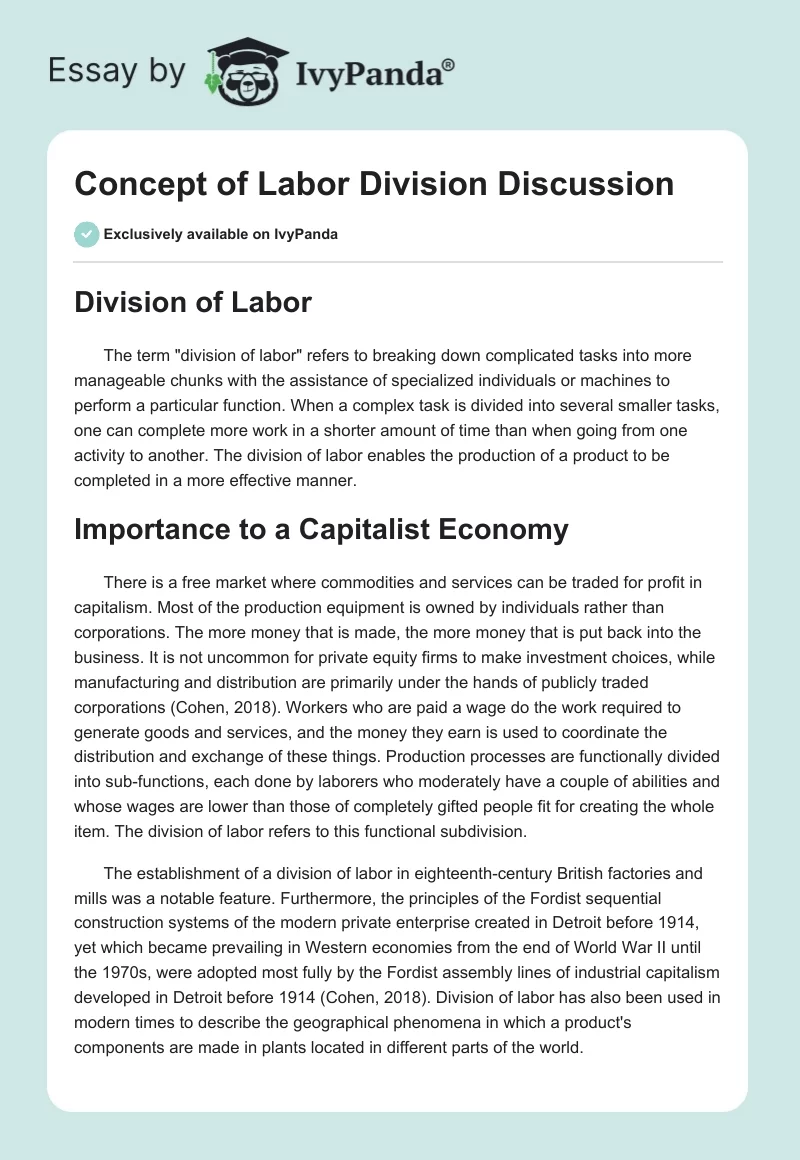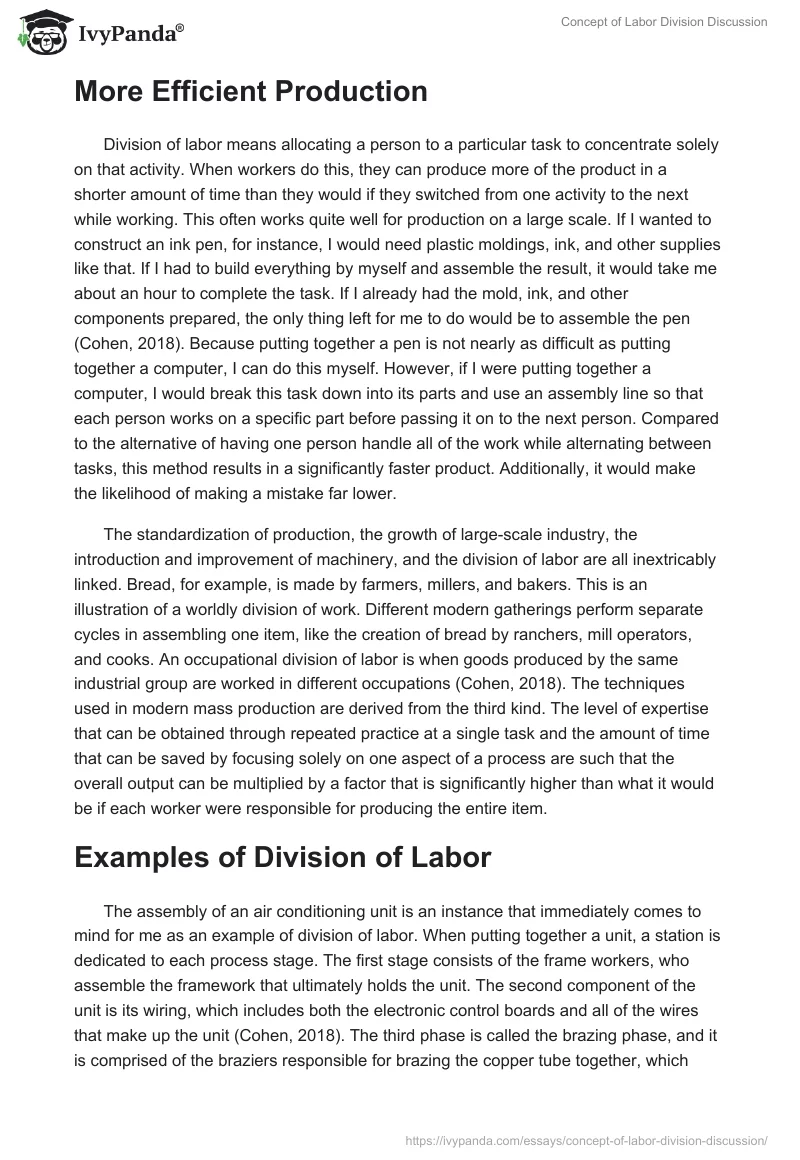Division of Labor
The term “division of labor” refers to breaking down complicated tasks into more manageable chunks with the assistance of specialized individuals or machines to perform a particular function. When a complex task is divided into several smaller tasks, one can complete more work in a shorter amount of time than when going from one activity to another. The division of labor enables the production of a product to be completed in a more effective manner.
Importance to a Capitalist Economy
There is a free market where commodities and services can be traded for profit in capitalism. Most of the production equipment is owned by individuals rather than corporations. The more money that is made, the more money that is put back into the business. It is not uncommon for private equity firms to make investment choices, while manufacturing and distribution are primarily under the hands of publicly traded corporations (Cohen, 2018). Workers who are paid a wage do the work required to generate goods and services, and the money they earn is used to coordinate the distribution and exchange of these things. Production processes are functionally divided into sub-functions, each done by laborers who moderately have a couple of abilities and whose wages are lower than those of completely gifted people fit for creating the whole item. The division of labor refers to this functional subdivision.
The establishment of a division of labor in eighteenth-century British factories and mills was a notable feature. Furthermore, the principles of the Fordist sequential construction systems of the modern private enterprise created in Detroit before 1914, yet which became prevailing in Western economies from the end of World War II until the 1970s, were adopted most fully by the Fordist assembly lines of industrial capitalism developed in Detroit before 1914 (Cohen, 2018). Division of labor has also been used in modern times to describe the geographical phenomena in which a product’s components are made in plants located in different parts of the world.
More Efficient Production
Division of labor means allocating a person to a particular task to concentrate solely on that activity. When workers do this, they can produce more of the product in a shorter amount of time than they would if they switched from one activity to the next while working. This often works quite well for production on a large scale. If I wanted to construct an ink pen, for instance, I would need plastic moldings, ink, and other supplies like that. If I had to build everything by myself and assemble the result, it would take me about an hour to complete the task. If I already had the mold, ink, and other components prepared, the only thing left for me to do would be to assemble the pen (Cohen, 2018). Because putting together a pen is not nearly as difficult as putting together a computer, I can do this myself. However, if I were putting together a computer, I would break this task down into its parts and use an assembly line so that each person works on a specific part before passing it on to the next person. Compared to the alternative of having one person handle all of the work while alternating between tasks, this method results in a significantly faster product. Additionally, it would make the likelihood of making a mistake far lower.
The standardization of production, the growth of large-scale industry, the introduction and improvement of machinery, and the division of labor are all inextricably linked. Bread, for example, is made by farmers, millers, and bakers. This is an illustration of a worldly division of work. Different modern gatherings perform separate cycles in assembling one item, like the creation of bread by ranchers, mill operators, and cooks. An occupational division of labor is when goods produced by the same industrial group are worked in different occupations (Cohen, 2018). The techniques used in modern mass production are derived from the third kind. The level of expertise that can be obtained through repeated practice at a single task and the amount of time that can be saved by focusing solely on one aspect of a process are such that the overall output can be multiplied by a factor that is significantly higher than what it would be if each worker were responsible for producing the entire item.
Examples of Division of Labor
The assembly of an air conditioning unit is an instance that immediately comes to mind for me as an example of division of labor. When putting together a unit, a station is dedicated to each process stage. The first stage consists of the frame workers, who assemble the framework that ultimately holds the unit. The second component of the unit is its wiring, which includes both the electronic control boards and all of the wires that make up the unit (Cohen, 2018). The third phase is called the brazing phase, and it is comprised of the braziers responsible for brazing the copper tube together, which enables the Freon to flow through the unit. Fourth, there is the installation of the fan and the installation of the external skin of the unit, which gives it its finished appearance. There is a step of the unit called the testing phase, which consists of running the unit and verifying for quality assurance. After receiving a pass, the unit will be finished.
References
Cohen, R. B. (2018). The new international division of labor, multinational corporations and urban hierarchy. In Urbanization and urban planning in capitalist society (pp. 287-315). Routledge.


